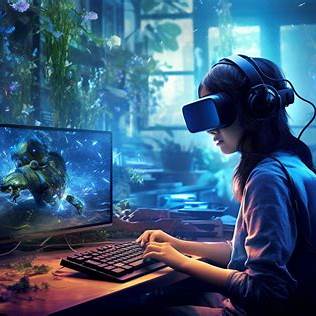Digital Revolution - Part 1 of 6: AI in Gaming & Animation

The Human Side of a Digital Revolution
Artificial Intelligence (AI) seems to be everywhere, from apps that write code to tools that draw in seconds. But when it comes to gaming and animation, AI isn’t replacing human creativity; it’s amplifying it. The technology is powerful, yes, but it still can’t dream, imagine, or feel. And that’s where people come in.
A Growing Industry
The global gaming market is projected to reach over $300 billion by 2030 (Statista, 2025).
AI now supports everything from background generation to motion capture clean-up, giving developers more time to focus on storytelling, emotion, and experience.
That means new roles are appearing, while others are evolving — and nearly all of them still need human talent.
Human Careers in the Age of AI
- Game Designer & Developer
Blend creativity and logic to build worlds and gameplay that excite players. Designers imagine the experience; developers turn it into code and action.
- 3D Modeler & Animator
Use digital sculpting and motion tools — often powered by AI — to bring characters and environments to life. AI speeds up the process, but every expression, gesture, and detail still comes from human creativity.
- Narrative Designer & Writer
Craft stories, dialogue, and quests that make a game unforgettable. AI can help test ideas, but it can’t capture emotion, humor, or heart.
- AI Systems Trainer & Game Tester
“Teach” AI how to behave realistically by testing and fine-tuning it. These specialists ensure that AI-driven characters act naturally and make sense to players.
- Gameplay Data Analyst
Analyze how players interact with a game to improve design, fairness, and fun.
- Ethics & Safety Specialist
Work behind the scenes to ensure games use AI responsibly — with fairness, diversity, and safety in mind.
- Virtual Reality ( VR ) & Augmented Reality ( AR ) Developer
Design immersive experiences that seamlessly blend real-world and digital elements. AI helps, but these environments still need human imagination to feel authentic.
How to Break In
You don’t need a four-year degree to start. Many creators enter through career-focused colleges, specialized certificates, or online programs in:
Game Design & Development
3D Animation & Modeling
Computer Programming for Games
Digital Arts & Interactive Media
AI Fundamentals or Machine Learning Basics
Internships, indie projects, and building your own small games can open doors. The key is curiosity — and a portfolio that shows your creativity in action.
Best High School Courses to Prepare for This Career
To set yourself up for success in gaming and animation, take courses that strengthen both your technical and creative sides. Great options include:
Computer Science / Coding – Learn logic, programming, and game mechanics.
Visual Arts / Graphic Design – Develop creative skills and enhance visual storytelling abilities.
Mathematics (especially Algebra & Geometry) – Strengthen problem-solving and 3D modeling foundations.
English / Creative Writing – Improve storytelling, character development, and narrative skills.
Business / Entrepreneurship – Understand how gaming studios and digital projects operate.
Media Arts or Communications Technology – Gain hands-on experience with editing, animation, and design tools.
The Takeaway
AI may automate certain tasks, but it can’t replace imagination. It can’t invent stories that make us laugh or cry, or design worlds that make players feel alive.
So if you love storytelling, design, or technology — this is your time.
You can build, create, and even teach AI what fun looks like.
Next Up — Part 2: AI in Healthcare
See how technology is helping doctors diagnose faster, improving mental-health support, and creating new jobs focused on empathy and ethics.
Sources:
Statista (2025) – Gaming Market Revenues Worldwide
World Economic Forum – Jobs of Tomorrow Report, 2024